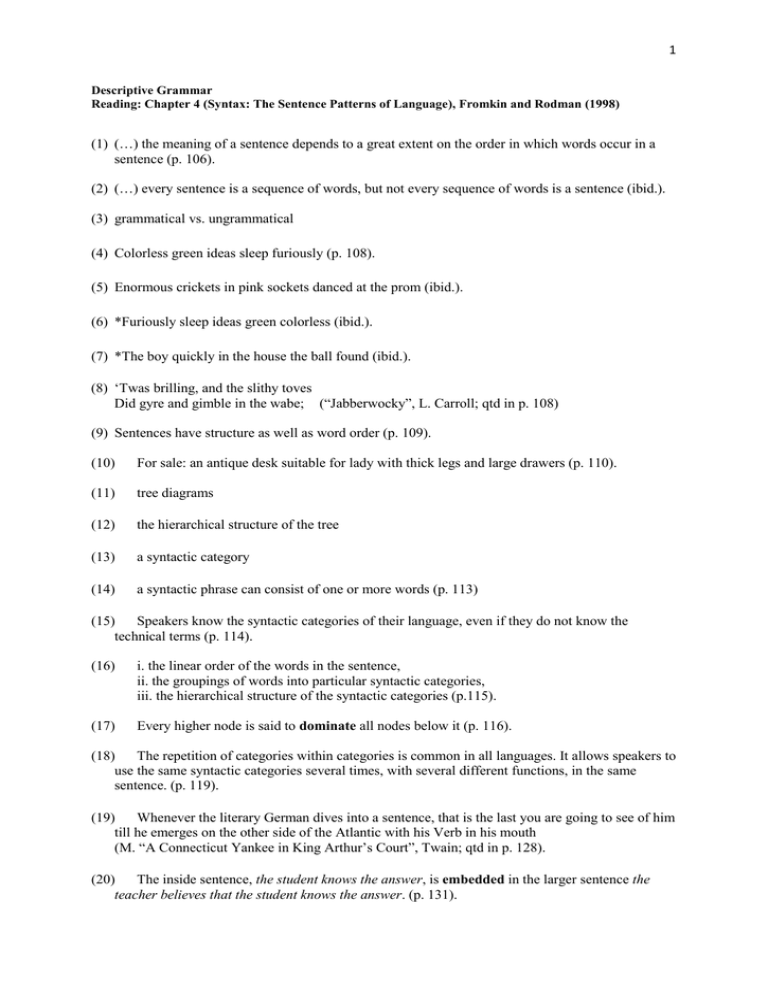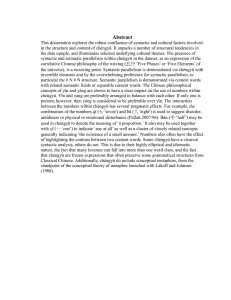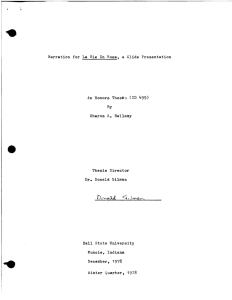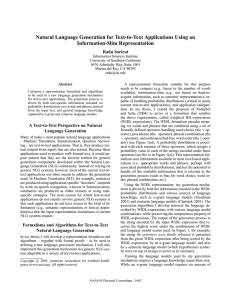Chapter 4 (Syntax: The Sentence Patterns of Language), Fromkin
advertisement

1 Descriptive Grammar Reading: Chapter 4 (Syntax: The Sentence Patterns of Language), Fromkin and Rodman (1998) (1) (…) the meaning of a sentence depends to a great extent on the order in which words occur in a sentence (p. 106). (2) (…) every sentence is a sequence of words, but not every sequence of words is a sentence (ibid.). (3) grammatical vs. ungrammatical (4) Colorless green ideas sleep furiously (p. 108). (5) Enormous crickets in pink sockets danced at the prom (ibid.). (6) *Furiously sleep ideas green colorless (ibid.). (7) *The boy quickly in the house the ball found (ibid.). (8) ‘Twas brilling, and the slithy toves Did gyre and gimble in the wabe; (“Jabberwocky”, L. Carroll; qtd in p. 108) (9) Sentences have structure as well as word order (p. 109). (10) For sale: an antique desk suitable for lady with thick legs and large drawers (p. 110). (11) tree diagrams (12) the hierarchical structure of the tree (13) a syntactic category (14) a syntactic phrase can consist of one or more words (p. 113) (15) Speakers know the syntactic categories of their language, even if they do not know the technical terms (p. 114). (16) i. the linear order of the words in the sentence, ii. the groupings of words into particular syntactic categories, iii. the hierarchical structure of the syntactic categories (p.115). (17) Every higher node is said to dominate all nodes below it (p. 116). (18) The repetition of categories within categories is common in all languages. It allows speakers to use the same syntactic categories several times, with several different functions, in the same sentence. (p. 119). (19) Whenever the literary German dives into a sentence, that is the last you are going to see of him till he emerges on the other side of the Atlantic with his Verb in his mouth (M. “A Connecticut Yankee in King Arthur’s Court”, Twain; qtd in p. 128). (20) The inside sentence, the student knows the answer, is embedded in the larger sentence the teacher believes that the student knows the answer. (p. 131).











